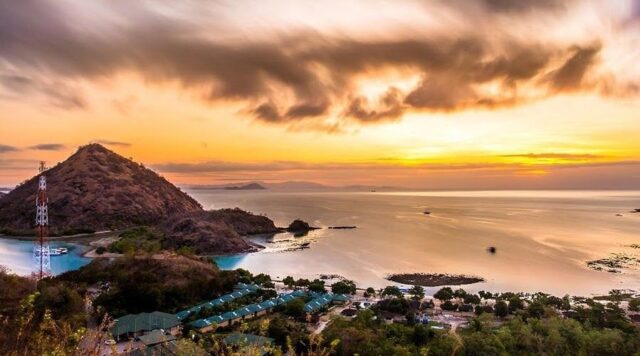
Labuan Bajo, once a quiet fishing village on the western tip of Flores Island, has become Indonesia’s premier gateway to the legendary Komodo National Park.
If you want to see Komodo dragons, swim with manta rays, and explore one of the most diverse marine ecosystems on Earth, this is where your journey begins.
The answer to why Labuan Bajo matters is simple: every adventure in the Komodo Islands starts here. It’s the only place where travelers can find the right combination of logistics, tours, and access to this UNESCO World Heritage site.
The First Impression: Where Land Meets the Sea
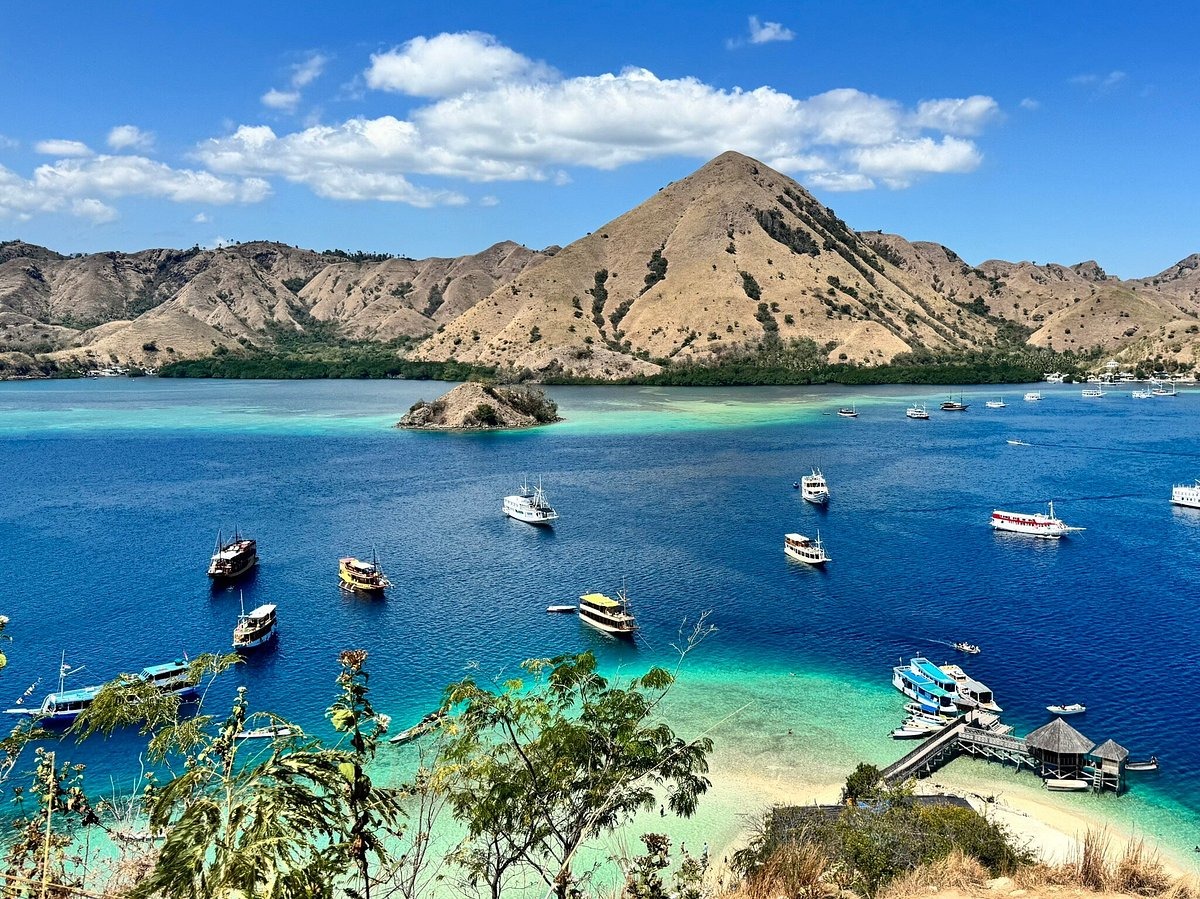
The town itself stretches along a crescent-shaped bay framed by green hills. Arriving by plane, you see dozens of small islands dotting the turquoise sea below, each one promising coral reefs and hidden beaches.
Labuan Bajo has grown fast, but it still keeps a relaxed island feel. Streets are lined with dive shops, small cafés, and boutique hotels overlooking the harbor.
Despite its growing popularity, Labuan Bajo is still compact enough to walk through in an afternoon. The main street connects the port, local market, and most restaurants, while viewpoints like Bukit Amelia and Bukit Cinta offer spectacular sunsets over the bay.
When to Go and How to Get There
The best time to visit is during the dry season, from April to November, when the seas are calm and visibility for diving reaches up to 30 meters. December to March brings rain and occasional choppy waters, but the lush landscapes can be worth the trade-off.
Flights to Labuan Bajo’s Komodo International Airport (LBJ) operate daily from Bali, Jakarta, and Surabaya. Once you arrive, the port is only a 10-minute drive away, making it easy to start exploring immediately. Many travelers spend their first night in town, stocking up on supplies before heading to the islands.
| Month | Weather | Best For |
| April–June | Dry, clear skies | Diving, island hopping |
| July–September | Peak season, sunny | Wildlife, snorkeling |
| October–November | Transition period | Fewer crowds, warm water |
| December–March | Rainy, green scenery | Photography, relaxed stays |
Exploring the Komodo Islands
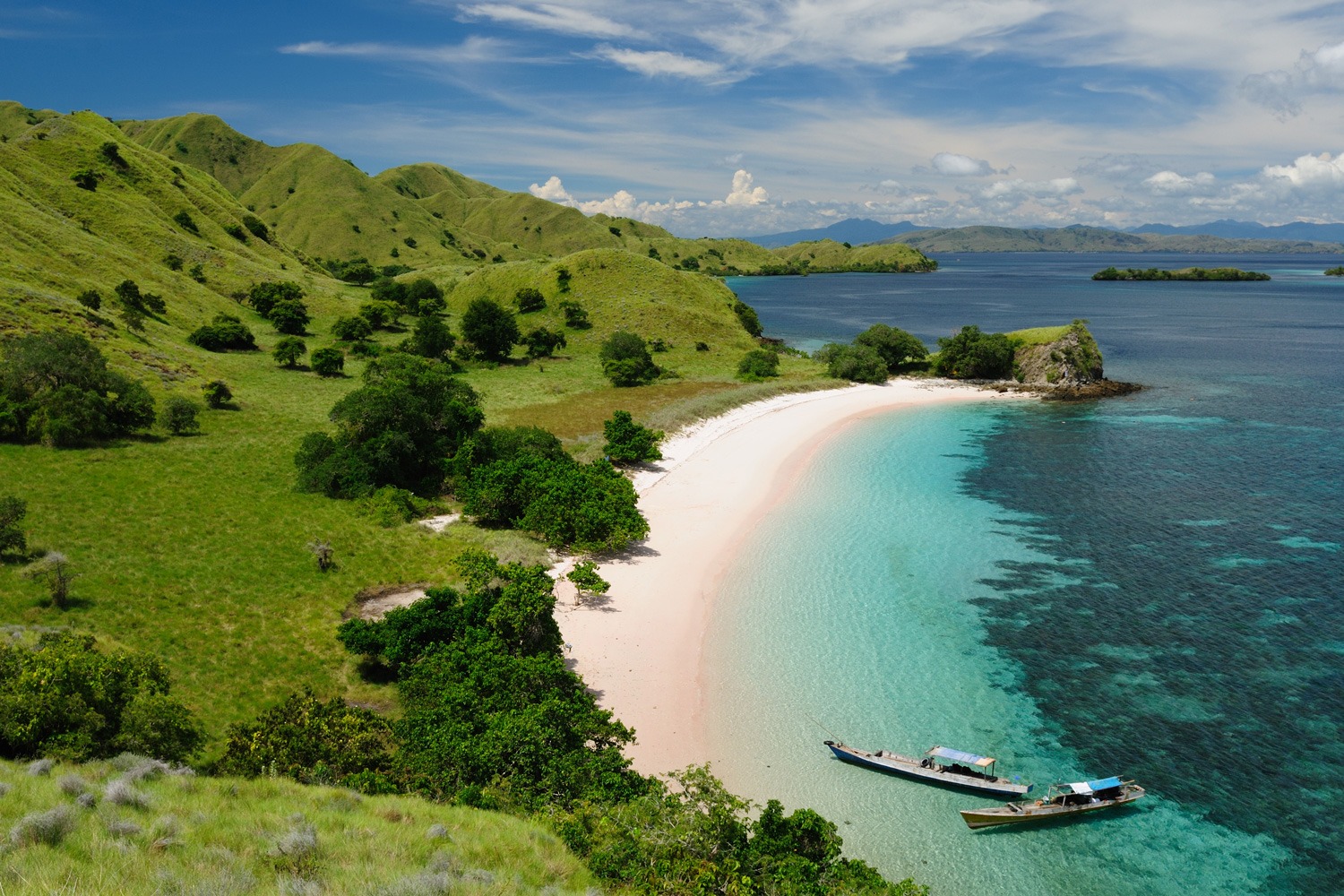
Komodo National Park covers 29 volcanic islands, including Komodo, Rinca, and Padar. It’s one of the few places in the world where you can see Komodo dragons in the wild.
These ancient reptiles, the largest living lizards, can reach up to three meters long. Guided treks on Komodo or Rinca Islands let you safely observe them in their natural habitat.
Beyond the dragons, the park is a marine paradise. The surrounding waters are part of the Coral Triangle, home to over 1,000 fish species and 250 types of coral.
Sites like Batu Bolong and Manta Point are among the best diving spots in Southeast Asia, where currents bring rich nutrients and attract manta rays, reef sharks, and turtles.
If diving isn’t your focus, the islands still offer some of Indonesia’s most iconic scenery. Padar Island, with its three-colored bays and sweeping ridges, has become a symbol of the region. The short but steep hike to its viewpoint is one of the most photographed experiences in the country.
Getting Around: Boats, Cruises, and Charters
Most of Komodo’s magic unfolds on the water. Daily boats leave from Labuan Bajo to Komodo and Rinca, but multi-day liveaboard trips allow you to explore further and see more.
A popular option for travelers who want comfort and flexibility is to book a yacht charter in Komodo.
This lets you customize your route, spend nights under the stars, and visit less crowded islands like Sebayur or Siaba Besar.
Chartered boats range from traditional wooden phinisi vessels to modern luxury yachts. Some are designed for small groups or families, offering private cabins, onboard chefs, and diving equipment.
Others cater to divers or photographers seeking specific experiences. The key advantage of private charters isn’t luxury, it’s access.
You can choose when and where to go, avoid the tour crowds, and see the islands at your own pace.
The Town Beyond the Port
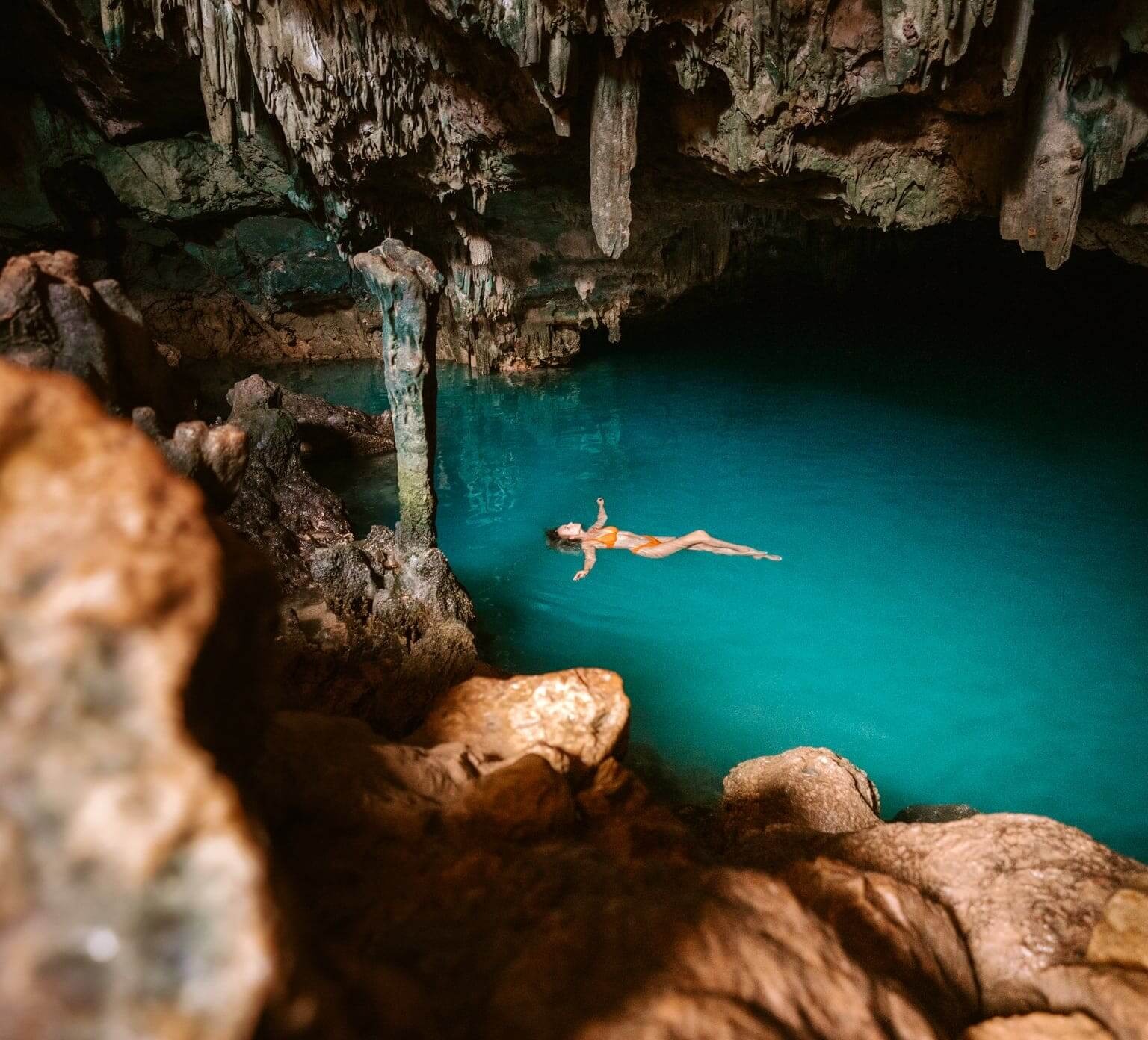
Labuan Bajo’s charm doesn’t end at the harbor. Inland, you’ll find waterfalls, caves, and authentic local life.
Cunca Wulang Canyon, about an hour’s drive from town, offers natural pools surrounded by cliffs. Closer to the airport, Batu Cermin Cave reveals shimmering limestone walls that reflect sunlight through narrow gaps.
The town’s culinary scene has also matured. While seafood is still a highlight, fresh snapper grilled with sambal matah, new restaurants offer everything from Italian to Japanese cuisine.
Rooftop bars like Paradise and Atlantis Beach Club have become sunset staples, blending tropical views with live music and cocktails.
Accommodation and Travel Logistics
Labuan Bajo offers a range of stays from budget hostels to five-star resorts. Travelers on mid-range budgets can expect comfortable bungalows with sea views for around $50–100 per night, while luxury resorts on nearby private islands reach $300 and beyond. Booking early is essential during peak months, especially for rooms with harbor views.
| Type | Examples | Price Range (per night) |
| Budget guesthouse | La Boheme Bajo, Ciao Hostel | $15–30 |
| Mid-range hotel | Puri Sari Beach Hotel, Local Collection | $50–100 |
| Luxury resort | AYANA Komodo, Plataran Komodo | $200+ |
Transportation within town mainly relies on taxis or motorbike rentals. For short distances, “ojek” motorbike rides are common and inexpensive. Since roads are winding and steep, driving cautiously is key.
Responsible Travel and Conservation
Komodo National Park is both fragile and extraordinary. Its balance depends on how tourism is managed. Visitors should always follow park rules and stay on marked trails, avoid feeding animals, and use reef-safe sunscreen to protect marine life.
Plastic waste remains an issue, so carrying a refillable bottle and reusable bags makes a real difference.
The local community benefits from tourism, but preserving their environment requires participation from visitors, too. Many dive operators and charter companies now support reef restoration or waste reduction projects. Choosing these operators helps sustain the region’s biodiversity while improving your travel experience.
The Heart of the Journey
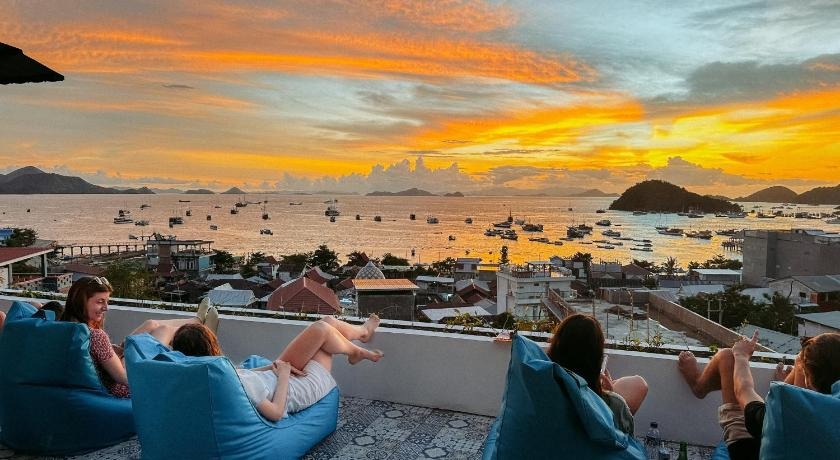
What makes Labuan Bajo more than just a stopover is how it blends adventure and serenity. You can spend a morning trekking among dragons and an afternoon floating in a coral garden.
The town’s sunsets, burning orange over the islands, remind you why travelers fall in love with this corner of Indonesia.
For many, the trip marks something deeper than sightseeing. It’s a connection to nature that still feels raw and real. The combination of volcanic peaks, turquoise lagoons, and ancient creatures makes Komodo one of the few places left where the wild still feels untamed.
Final Thoughts
Labuan Bajo isn’t just the entry point to Komodo; it’s a destination with its own rhythm. Come prepared for early mornings, salt on your skin, and days that begin and end with the sea. Whether you join a day tour, dive expedition, or private yacht charter in Komodo, the experience always circles back to the same truth: this is one of the last frontiers of natural wonder in Indonesia.
Visiting here is not about ticking off a bucket list. It’s about seeing how nature still dominates the landscape, how life on land and sea intertwines, and how a small port town became the threshold to one of the planet’s most remarkable national parks.






